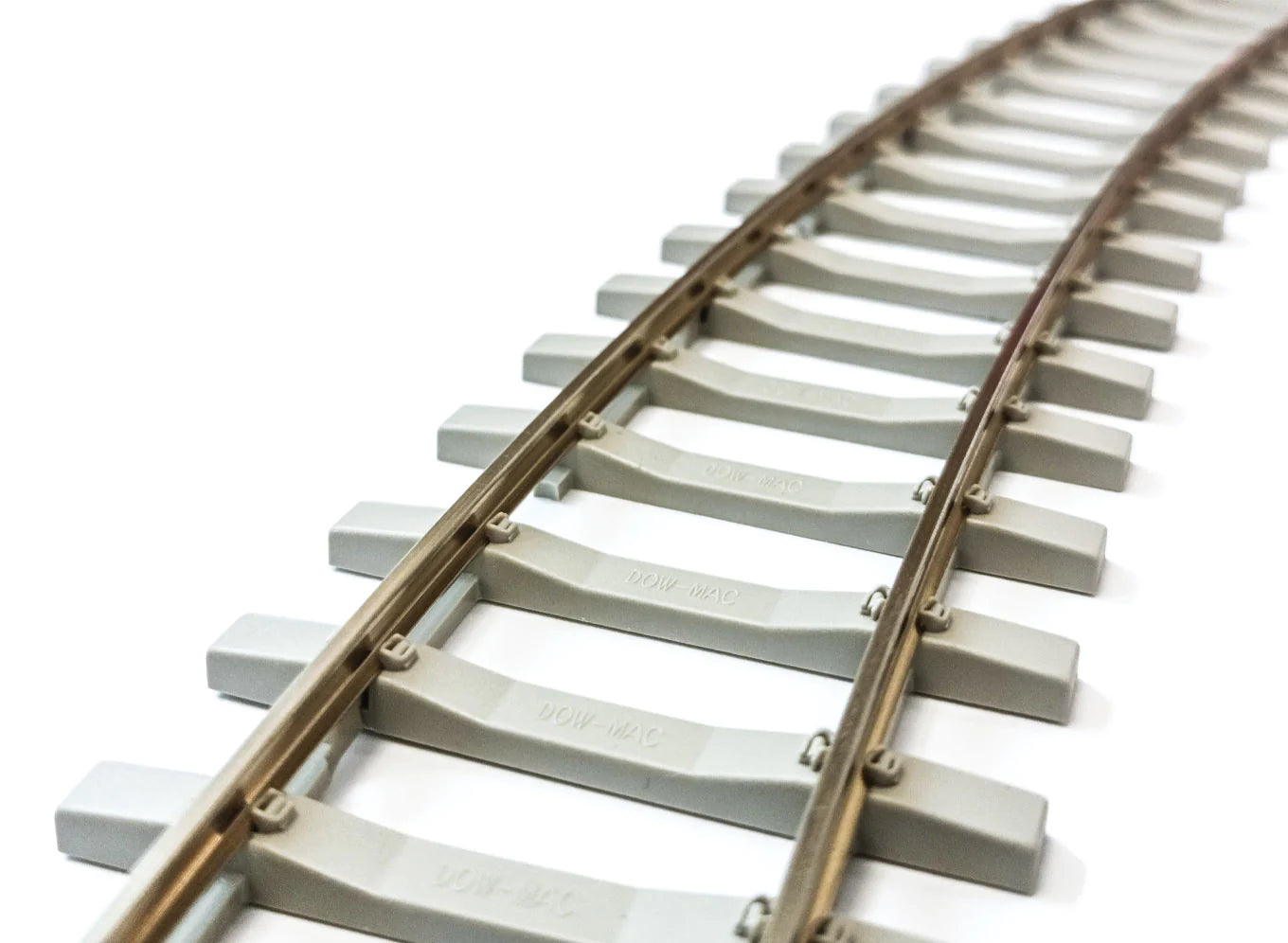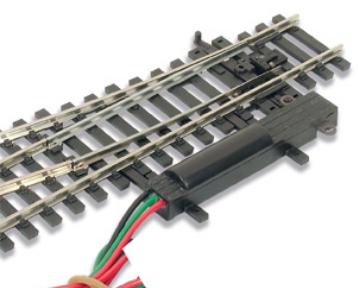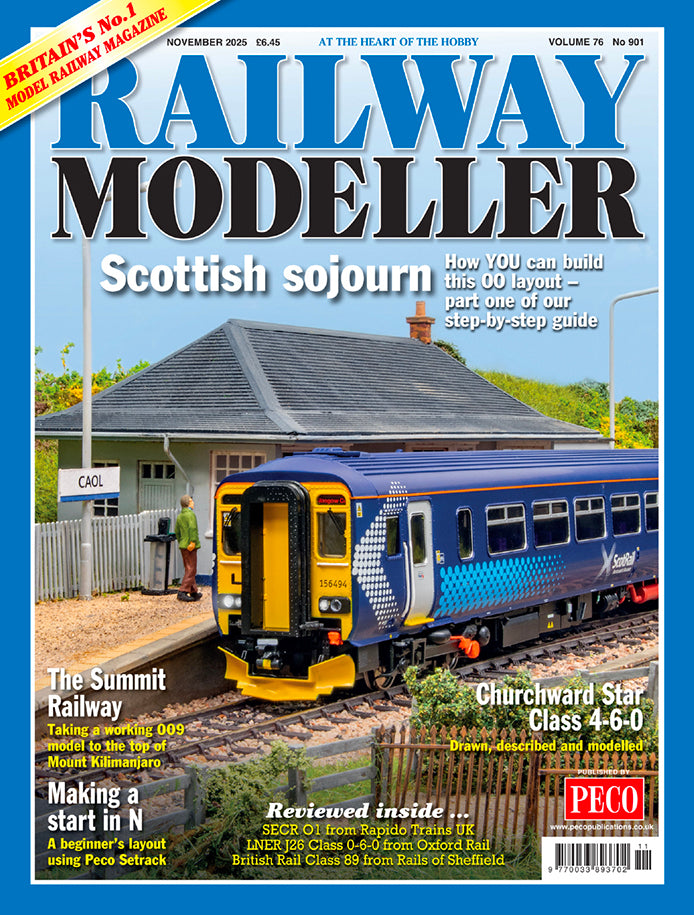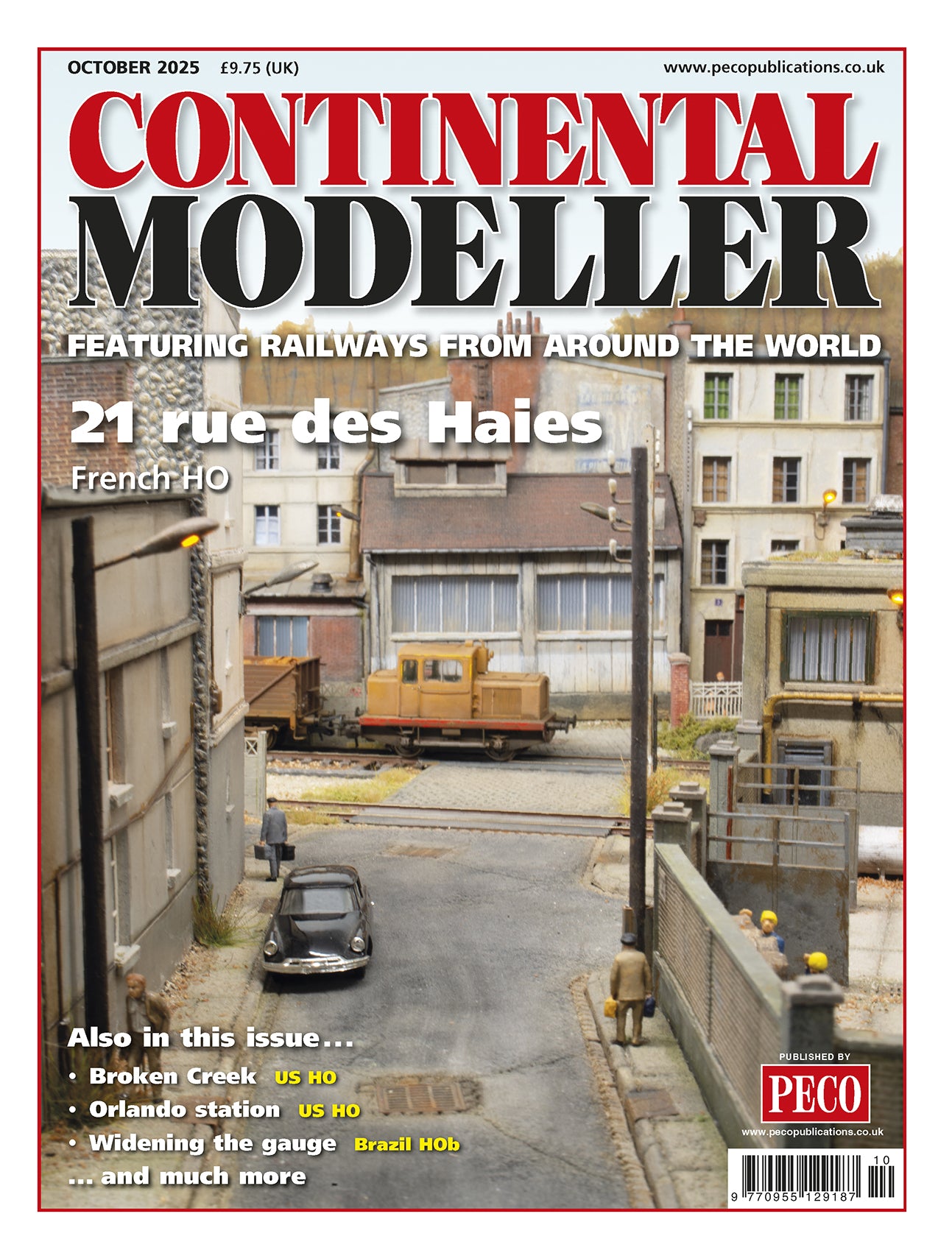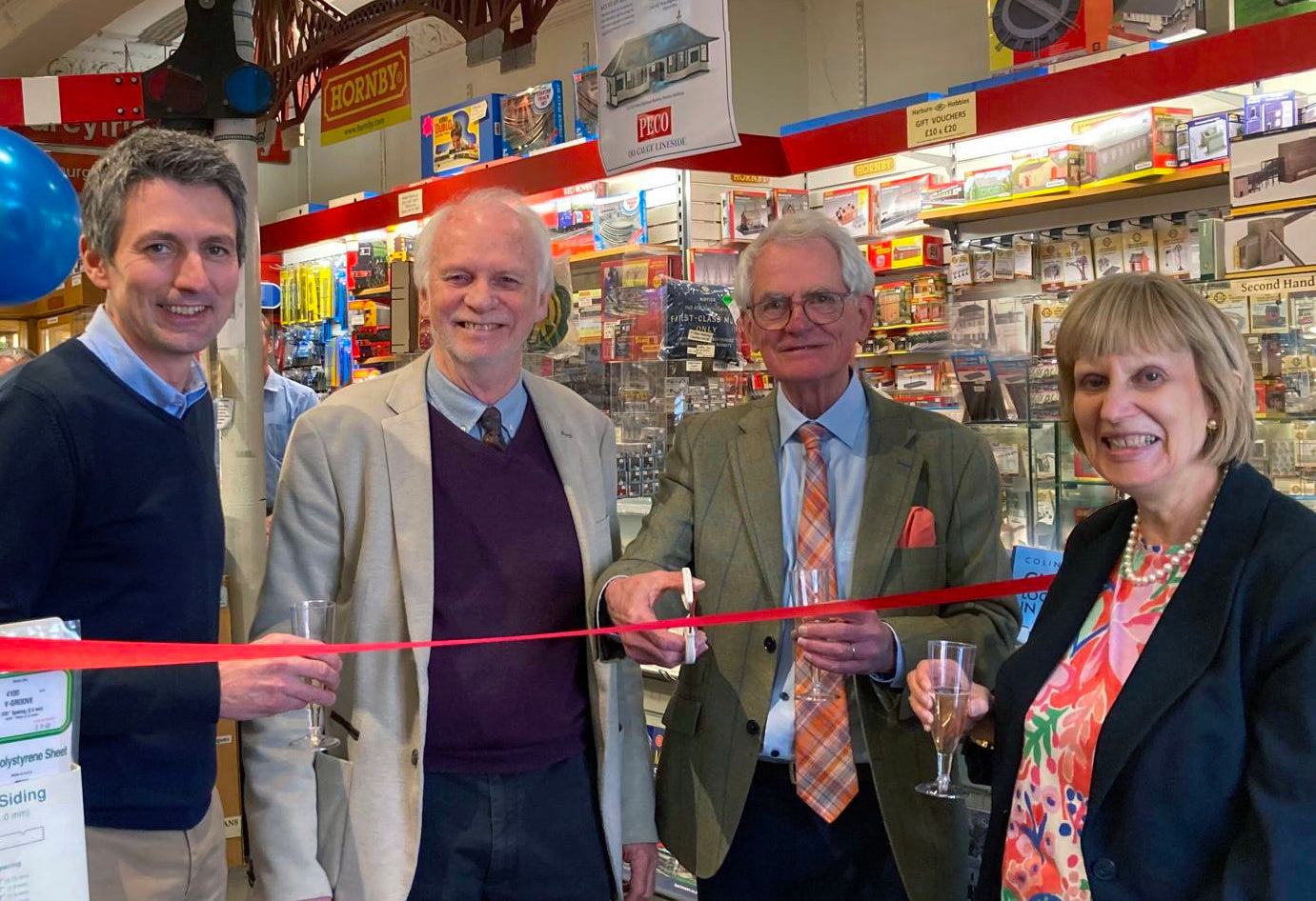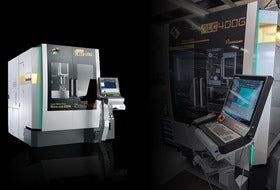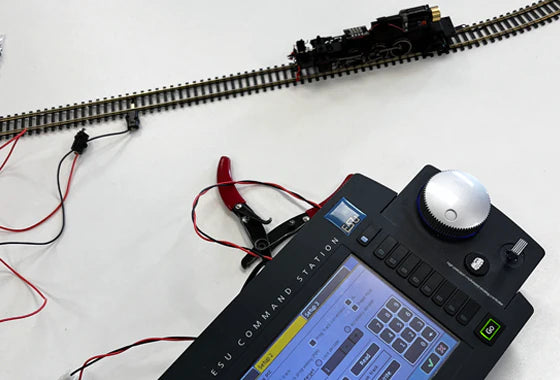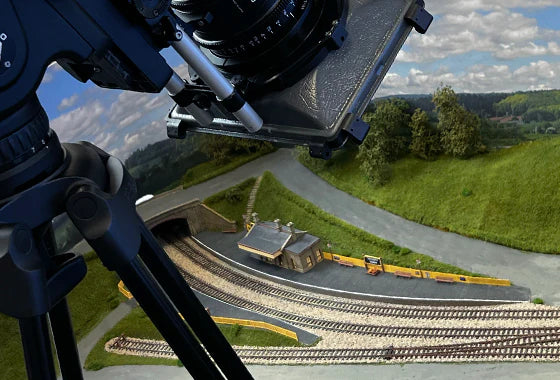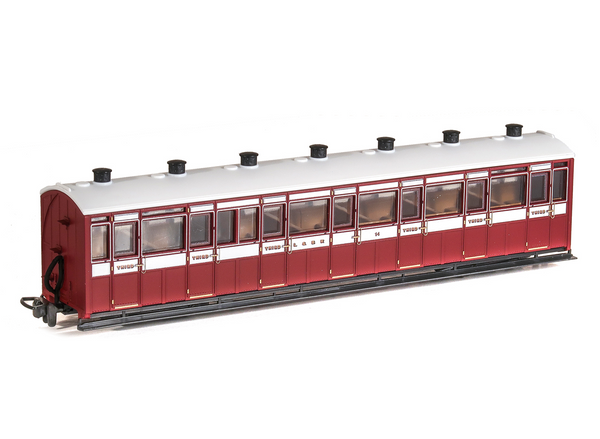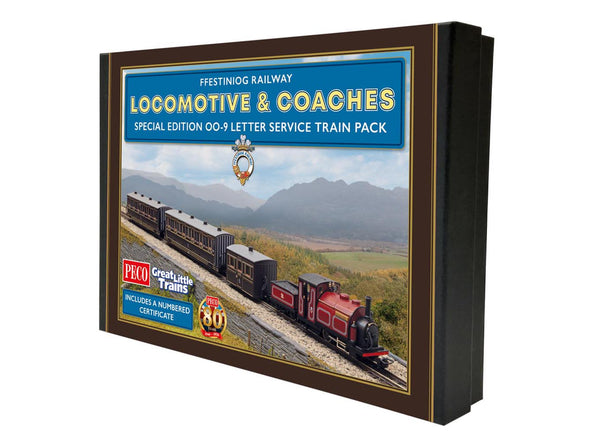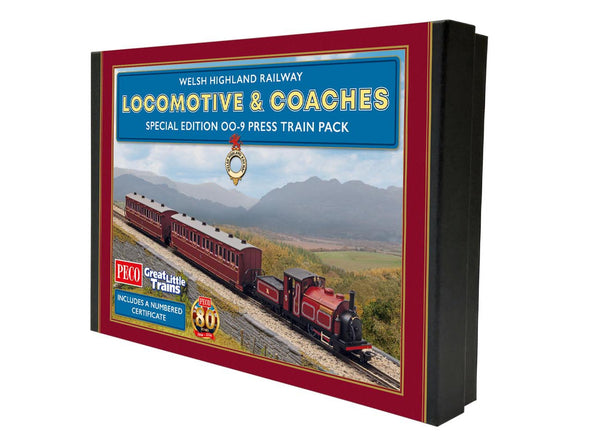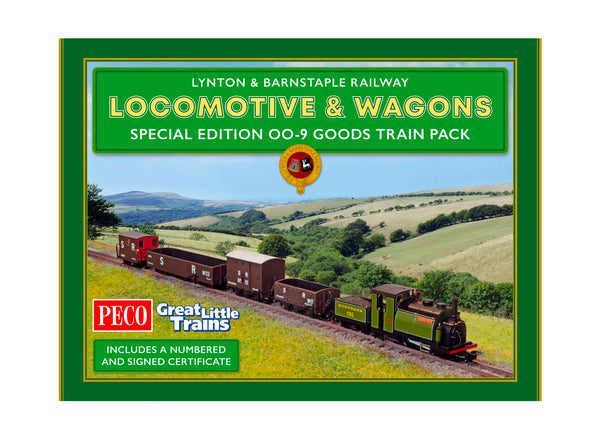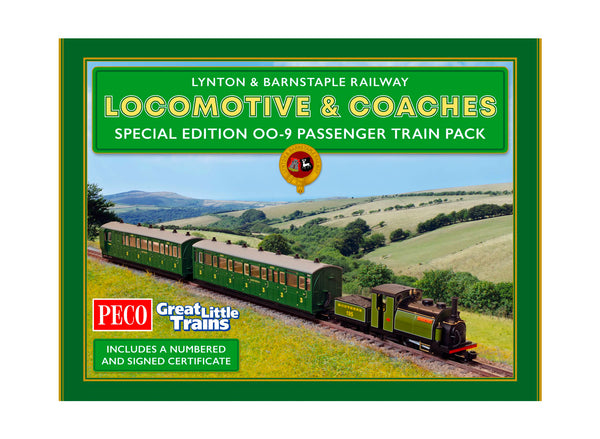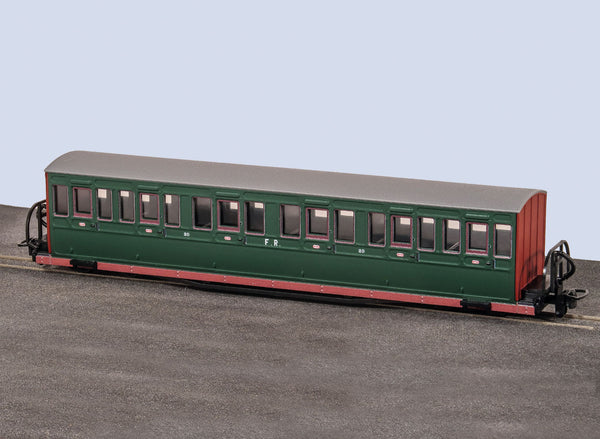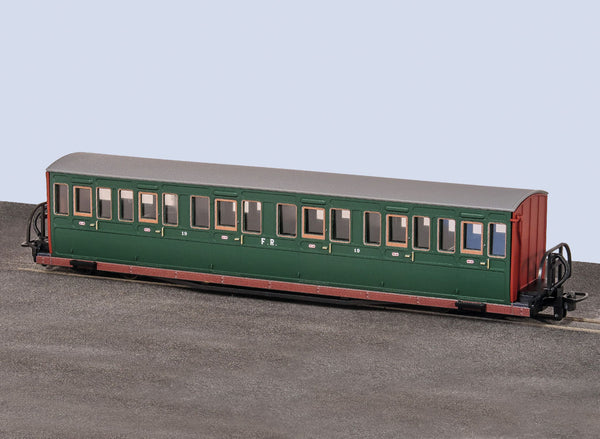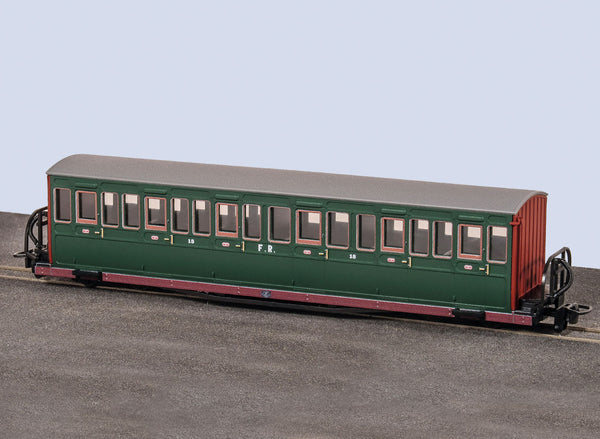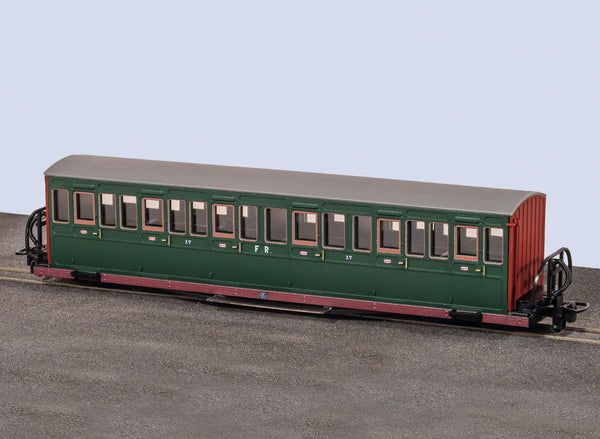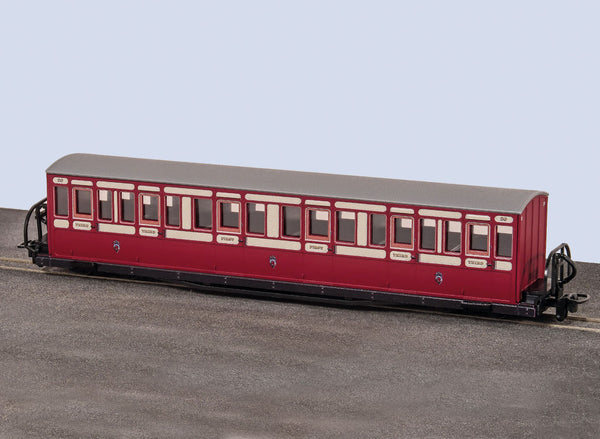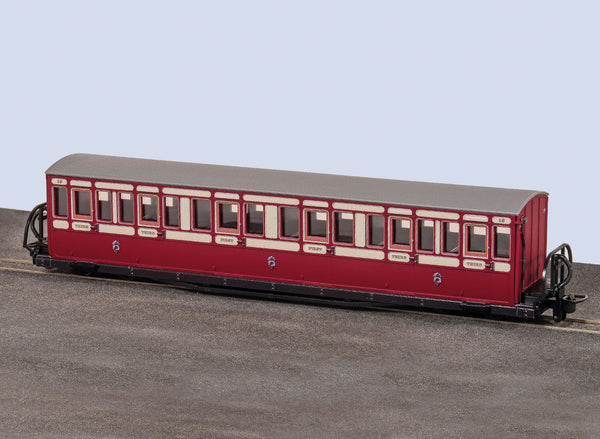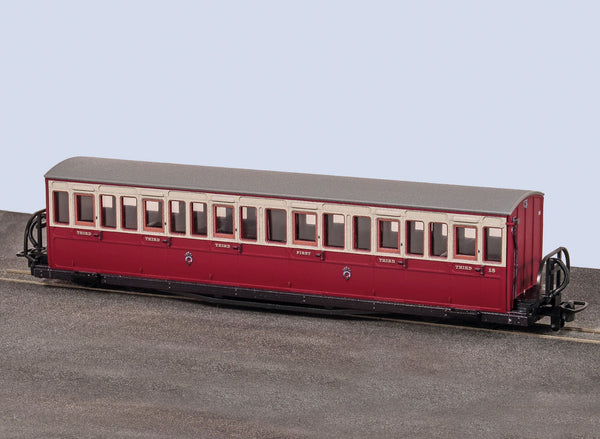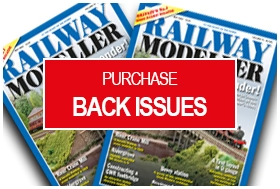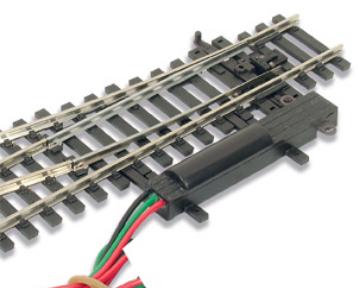BROWSE PECO PRODUCTS
Browse through our complete product portfolio.
147 Products Found
OO-9 All 3rd Coach Lynton and Barnstaple Livery No 14
These finely detailed ready to run coaches and wagons are accurately modelled on the rolling stock of the Lynton and Barnstaple Railway, both as an independent railway and after its' absorption into the Southern railway in 1922. They are also available painted but unlettered for those modellers who wish to tailor them for use on other lines.
Special Edition OO-9 Letter Service Train Pack (Ffestiniog Railway)
The Ffestiniog Railway, located in North Wales, is the world’s oldest surviving independent railway company, founded in 1832. Originally built to transport slate from the quarries of Blaenau Ffestiniog to the port at Porthmadog, it was engineered with a unique narrow gauge of just 1 ft 11½ in (597 mm), ideal for winding through the rugged Snowdonia landscape. Innovative features included gravity-powered slate trains running downhill and horses hauling the wagons back uphill.
In the 1860s, steam locomotives were introduced, making the Ffestiniog the first narrow-gauge railway in the world to successfully use them. After declining slate demand led to closure in 1946, dedicated volunteers began restoring the line in the 1950s. Today, it runs as a popular heritage railway, linking Porthmadog to Blaenau Ffestiniog once again, and is celebrated for its pioneering engineering, scenic beauty, and remarkable preservation story.
These latest PECO train packs celebrate that legacy with attention to authenticity and a passion for detail.
Special Edition OO-9 Press Train Pack (Welsh Highland Railway)
The Ffestiniog Railway, located in North Wales, is the world’s oldest surviving independent railway company, founded in 1832. Originally built to transport slate from the quarries of Blaenau Ffestiniog to the port at Porthmadog, it was engineered with a unique narrow gauge of just 1 ft 11½ in (597 mm), ideal for winding through the rugged Snowdonia landscape. Innovative features included gravity-powered slate trains running downhill and horses hauling the wagons back uphill.
In the 1860s, steam locomotives were introduced, making the Ffestiniog the first narrow-gauge railway in the world to successfully use them. After declining slate demand led to closure in 1946, dedicated volunteers began restoring the line in the 1950s. Today, it runs as a popular heritage railway, linking Porthmadog to Blaenau Ffestiniog once again, and is celebrated for its pioneering engineering, scenic beauty, and remarkable preservation story.
These latest PECO train packs celebrate that legacy with attention to authenticity and a passion for detail.
Special Edition OO-9 Goods Train Pack
Inspired by one of Britain’s most beloved narrow-gauge railways – the Lynton & Barnstaple, these exclusive new packs feature the beautifully detailed KATO Large England locomotive “Exmoor Pony” paired with unique-liveried rolling stock – only available in these sets and not sold separately.
Each pack comes in a smart, collector-style presentation box, complete with custom packaging and a striking outer sleeve – perfect for displaying or gifting.
Special Edition OO-9 Passenger Train Pack
Inspired by one of Britain’s most beloved narrow-gauge railways – the Lynton & Barnstaple, these exclusive new packs feature the beautifully detailed KATO Large England locomotive “Exmoor Pony” paired with unique-liveried rolling stock – only available in these sets and not sold separately.
Each pack comes in a smart, collector-style presentation box, complete with custom packaging and a striking outer sleeve – perfect for displaying or gifting.
FR Long 'Bowsider' Coach - Colonel Stephens No.20
The Ffestiniog Railway operated two pairs of bogie coaches numbered 17-20 and built by Brown Marshalls & Co and Gloucester Wagon Co. They were known as ‘Bowsiders’ because of the tumblehome shape of their sides. Numbers 17 and 18, built in 1876 are shorter with one 1st class compartment. Numbers 19 and 20, built in 1879 are longer with two 1st class compartments. All four are still in service on the Ffestiniog Railway today.
In the 1920s the elaborate liveries of the Victorian era were replaced with a simple scheme of green with red end panels. It became known as the ‘Colonel Stephens’ livery, after the General Manager of the Ffestiniog Railway from 1925 until his passing in 1931. The colour scheme was used until the end of passenger operations in 1939, sometimes alongside other colours such as yellow, in the mid 1930s.
Green with red ends was applied to carriage No.20 once again from 2005 until 2024, as depicted by GR-623B.
FR Long 'Bowsider' Coach - Colonel Stephens No.19
The Ffestiniog Railway operated two pairs of bogie coaches numbered 17-20 and built by Brown Marshalls & Co and Gloucester Wagon Co. They were known as ‘Bowsiders’ because of the tumblehome shape of their sides. Numbers 17 and 18, built in 1876 are shorter with one 1st class compartment. Numbers 19 and 20, built in 1879 are longer with two 1st class compartments. All four are still in service on the Ffestiniog Railway today.
In the 1920s the elaborate liveries of the Victorian era were replaced with a simple scheme of green with red end panels. It became known as the ‘Colonel Stephens’ livery, after the General Manager of the Ffestiniog Railway from 1925 until his passing in 1931. The colour scheme was used until the end of passenger operations in 1939, sometimes alongside other colours such as yellow, in the mid 1930s.
Green with red ends was applied to carriage No.20 once again from 2005 until 2024, as depicted by GR-623B.
FR Short 'Bowsider' Coach - Colonel Stephens No.18
The Ffestiniog Railway operated two pairs of bogie coaches numbered 17-20 and built by Brown Marshalls & Co and Gloucester Wagon Co. They were known as ‘Bowsiders’ because of the tumblehome shape of their sides. Numbers 17 and 18, built in 1876 are shorter with one 1st class compartment. Numbers 19 and 20, built in 1879 are longer with two 1st class compartments. All four are still in service on the Ffestiniog Railway today.
In the 1920s the elaborate liveries of the Victorian era were replaced with a simple scheme of green with red end panels. It became known as the ‘Colonel Stephens’ livery, after the General Manager of the Ffestiniog Railway from 1925 until his passing in 1931. The colour scheme was used until the end of passenger operations in 1939, sometimes alongside other colours such as yellow, in the mid 1930s.
Green with red ends was applied to carriage No.20 once again from 2005 until 2024, as depicted by GR-623B.
FR Short 'Bowsider' Coach - Colonel Stephens No.17
The Ffestiniog Railway operated two pairs of bogie coaches numbered 17-20 and built by Brown Marshalls & Co and Gloucester Wagon Co. They were known as ‘Bowsiders’ because of the tumblehome shape of their sides. Numbers 17 and 18, built in 1876 are shorter with one 1st class compartment. Numbers 19 and 20, built in 1879 are longer with two 1st class compartments. All four are still in service on the Ffestiniog Railway today.
In the 1920s the elaborate liveries of the Victorian era were replaced with a simple scheme of green with red end panels. It became known as the ‘Colonel Stephens’ livery, after the General Manager of the Ffestiniog Railway from 1925 until his passing in 1931. The colour scheme was used until the end of passenger operations in 1939, sometimes alongside other colours such as yellow, in the mid 1930s.
Green with red ends was applied to carriage No.20 once again from 2005 until 2024, as depicted by GR-623B.
FR Long 'Bowsider' Coach - Red & Cream No.20
The Ffestiniog Railway operated two pairs of bogie coaches numbered 17-20 and built by Brown Marshalls & Co and Gloucester Wagon Co. They were known as ‘Bowsiders’ because of the tumblehome shape of their sides. Numbers 17 and 18, built in 1876 are shorter with one 1st class compartment. Numbers 19 and 20, built in 1879 are longer with two 1st class compartments. All four are still in service on the Ffestiniog Railway today.
The red and cream livery was first applied to a rake of carriages in 1987 for the ‘Mountain Prince’ train service. Carriage 20 was the first Bowsider to appear in the livery.
Carriages 17 and 18 had cream applied to the full upper half of the carriage. 17 had the mouldings reinstated in 1990 as depicted by GR-602A. 18 continued to have cream across the upper half throughout its time in the scheme, as represented by GR-602B. Note the ‘Brown Marshalls & Co. Ltd’ builders plate printed on the ends of the carriage.
All four Bowsiders were repainted into historic liveries in the 2000s, but the red and cream colour scheme is still seen today on the more modern carriages
FR Long 'Bowsider' Coach - Red & Cream No.19
The Ffestiniog Railway operated two pairs of bogie coaches numbered 17-20 and built by Brown Marshalls & Co and Gloucester Wagon Co. They were known as ‘Bowsiders’ because of the tumblehome shape of their sides. Numbers 17 and 18, built in 1876 are shorter with one 1st class compartment. Numbers 19 and 20, built in 1879 are longer with two 1st class compartments. All four are still in service on the Ffestiniog Railway today.
The red and cream livery was first applied to a rake of carriages in 1987 for the ‘Mountain Prince’ train service. Carriage 20 was the first Bowsider to appear in the livery.
Carriages 17 and 18 had cream applied to the full upper half of the carriage. 17 had the mouldings reinstated in 1990 as depicted by GR-602A. 18 continued to have cream across the upper half throughout its time in the scheme, as represented by GR-602B. Note the ‘Brown Marshalls & Co. Ltd’ builders plate printed on the ends of the carriage.
All four Bowsiders were repainted into historic liveries in the 2000s, but the red and cream colour scheme is still seen today on the more modern carriages
FR Short 'Bowsider' Coach - Red & Cream No.18
The Ffestiniog Railway operated two pairs of bogie coaches numbered 17-20 and built by Brown Marshalls & Co and Gloucester Wagon Co. They were known as ‘Bowsiders’ because of the tumblehome shape of their sides. Numbers 17 and 18, built in 1876 are shorter with one 1st class compartment. Numbers 19 and 20, built in 1879 are longer with two 1st class compartments. All four are still in service on the Ffestiniog Railway today.
The red and cream livery was first applied to a rake of carriages in 1987 for the ‘Mountain Prince’ train service. Carriage 20 was the first Bowsider to appear in the livery.
Carriages 17 and 18 had cream applied to the full upper half of the carriage. 17 had the mouldings reinstated in 1990 as depicted by GR-602A. 18 continued to have cream across the upper half throughout its time in the scheme, as represented by GR-602B. Note the ‘Brown Marshalls & Co. Ltd’ builders plate printed on the ends of the carriage.
All four Bowsiders were repainted into historic liveries in the 2000s, but the red and cream colour scheme is still seen today on the more modern carriages
